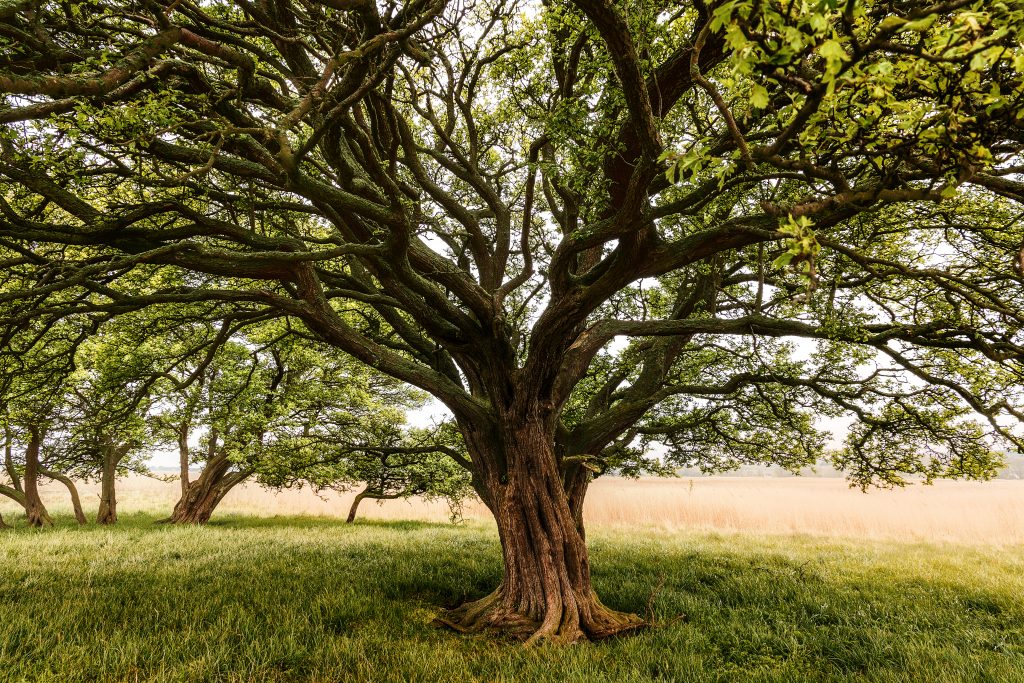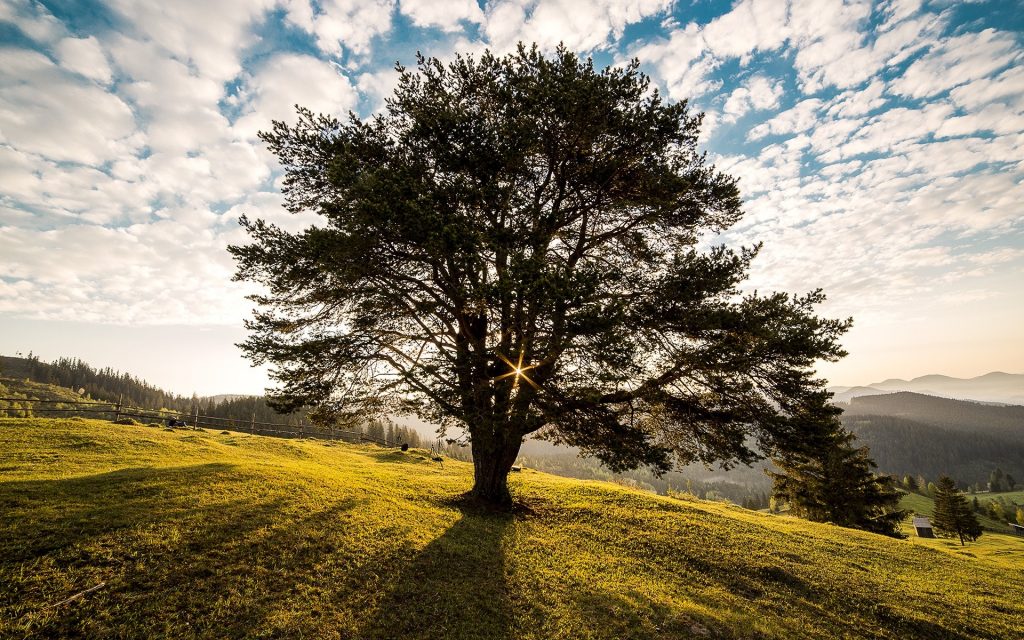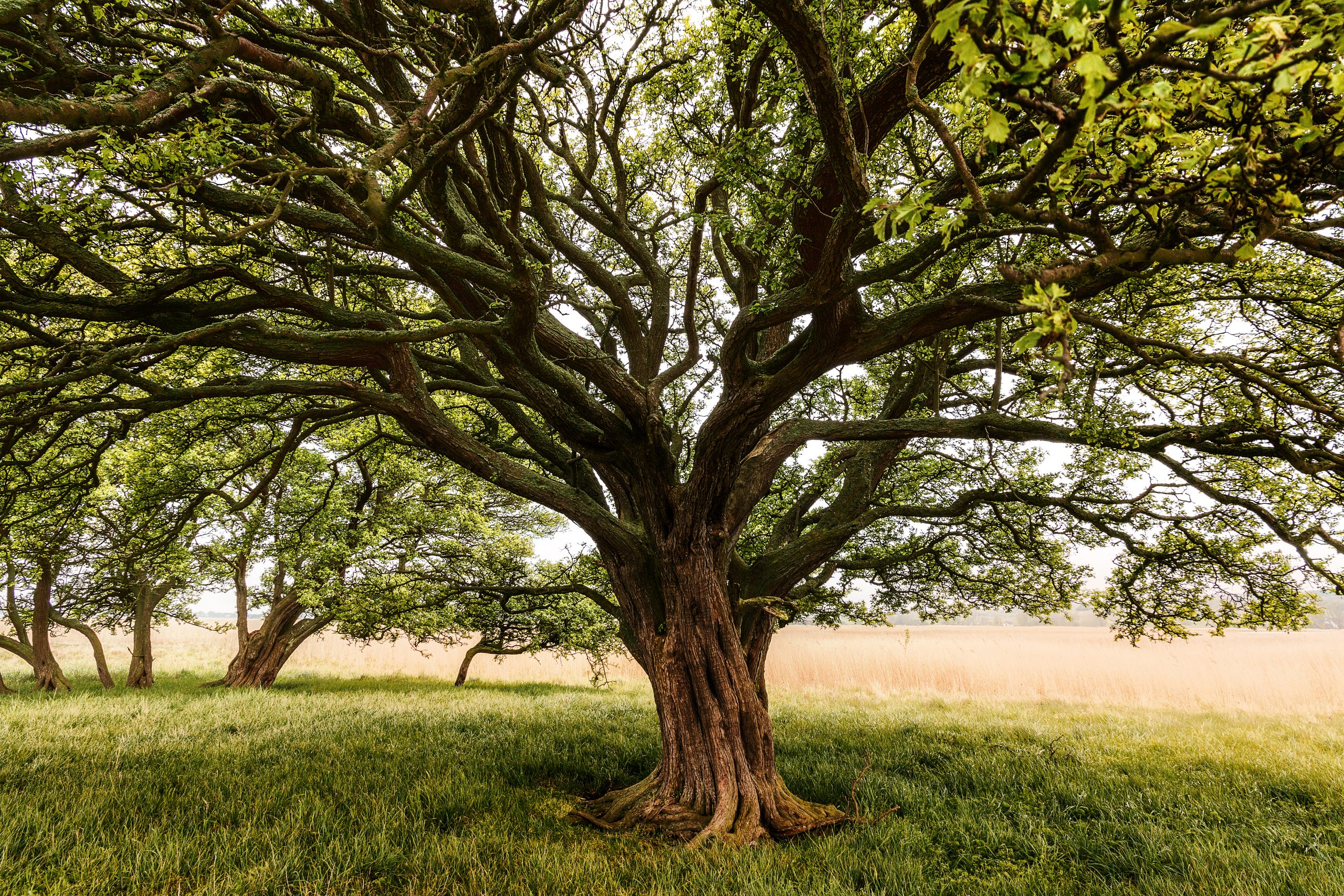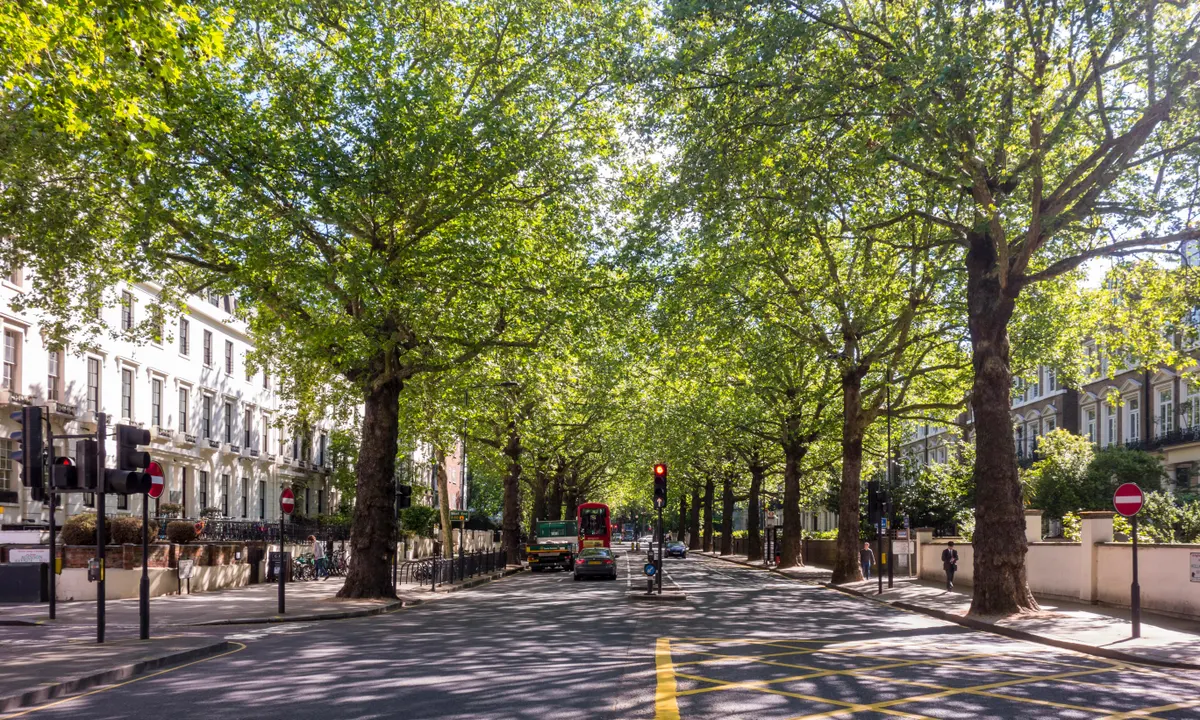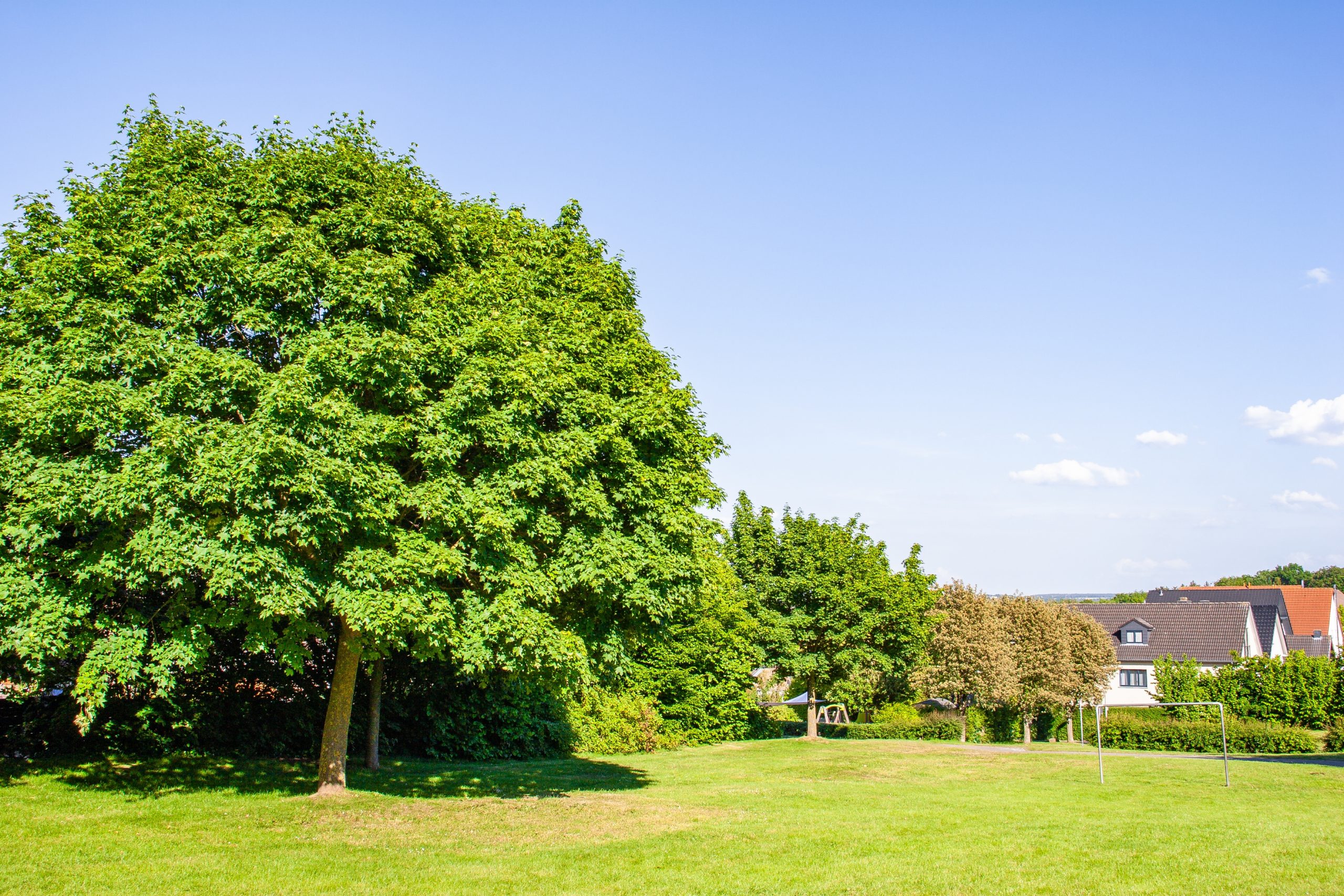THE SCIENCE BEHIND HOW TREES COMMUNICATE
THE SCIENCE BEHIND HOW TREES COMMUNICATE
Tree communication refers to the various ways in which trees and other plants communicate with each other and their environment. While plants lack nervous systems and the ability to communicate through sounds or language like animals do, they have developed complex mechanisms to exchange information and respond to their surroundings. The concept of tree communication challenges traditional views of plants as passive organisms and highlights their active and interconnected nature.
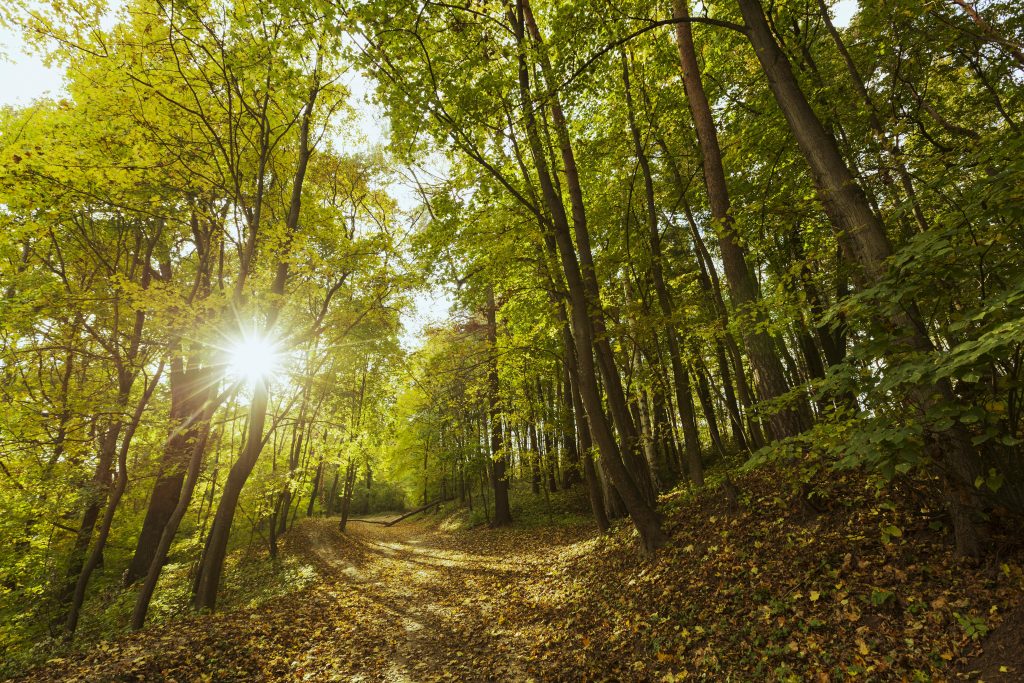
There are several fascinating aspects to tree communication:
- Chemical Signaling (Allelopathy and Volatile Organic Compounds): Trees can release chemical compounds into the environment to communicate with other plants, both of their own species and different species. This can involve allelopathy, where plants release chemicals to inhibit the growth of nearby competitors. Volatile organic compounds (VOCs) are emitted by plants, and they can serve as signals to warn neighboring plants about threats such as herbivores or diseases. This can help nearby plants prepare for potential challenges.
- Mycorrhizal Networks: Mycorrhizal fungi form symbiotic relationships with trees and other plants. These fungi create a network in the soil that connects multiple plants together. Through this network, plants can exchange nutrients, water, and even information. This underground communication system allows plants to share resources and support each other.
- Root Communication: Trees can communicate through their root systems by releasing chemicals and compounds into the soil. These chemicals can attract beneficial microorganisms, repel harmful organisms, or signal neighboring plants about environmental conditions or threats.
- Airborne Signaling: Trees can release airborne signals, such as VOCs, in response to stressors like herbivore attacks or pathogen infections. These signals can attract predators of the herbivores or induce neighboring plants to produce defensive compounds.
- Physical Responses: Trees can also communicate through physical responses. For example, when one part of a tree is damaged or attacked, it can trigger a response in other parts of the same tree to bolster defenses or allocate resources differently.
- Stress Communication: Trees can communicate stress or distress signals when facing unfavorable conditions like drought or heat stress. This can lead to coordinated responses among a population of trees to conserve water or adjust growth patterns.
- Communication with Microbes: Trees interact with a diverse community of microorganisms in and around their root systems. These interactions can influence nutrient availability, disease resistance, and overall tree health. Trees can release compounds that attract beneficial microbes while deterring harmful ones.
While much research has been done on these topics, our understanding of tree communication is still evolving. The interconnectedness of trees within ecosystems and their ability to respond to environmental changes in coordinated ways have significant implications for ecological studies, forestry practices, and even the design of sustainable agricultural systems.
The interconnectedness of trees in forests is a remarkable phenomenon that highlights how trees communicate, cooperate, and share resources through complex networks. This interconnectedness is facilitated by various mechanisms, including underground fungal networks, chemical signaling, and even physical interactions. Here’s an overview of the interconnectedness of trees in forests:
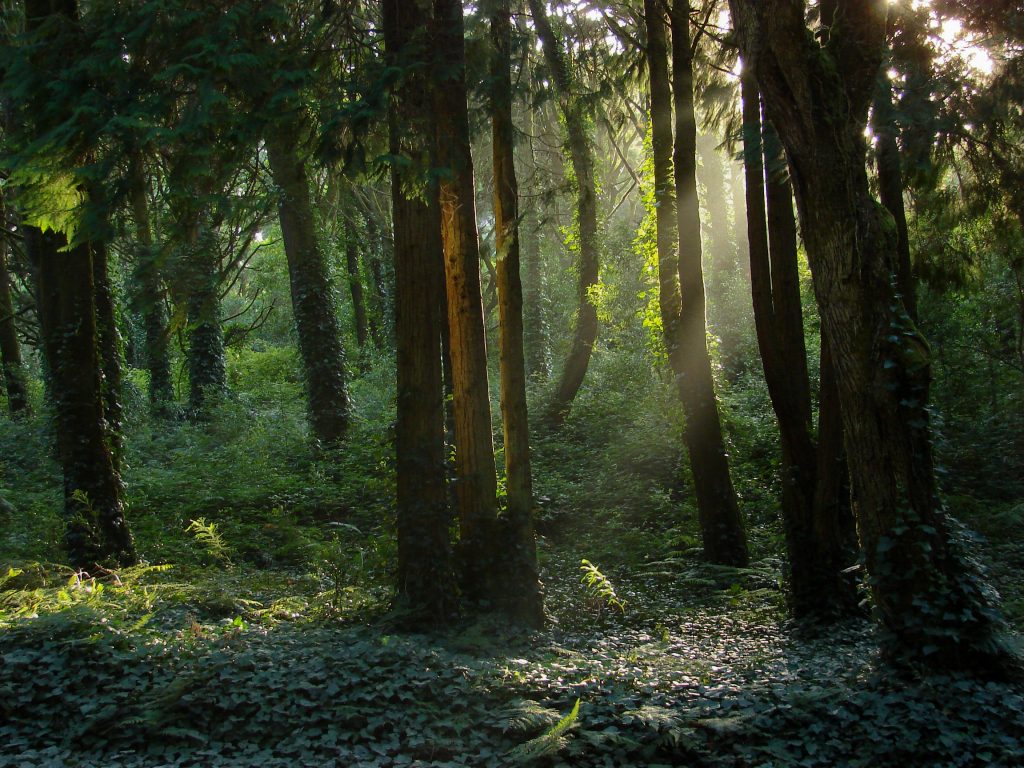
- Mycorrhizal Networks:
- Mycorrhizal networks are intricate systems of fungi that form mutually beneficial partnerships with tree roots.
- These networks, known as mycorrhizal networks or “wood wide webs,” connect trees and plants in a forest, allowing them to exchange nutrients, water, and even information.
- Fungi act as intermediaries, extending the reach of tree roots and facilitating the transfer of resources between trees.
- Nutrient Sharing:
- Through mycorrhizal networks, trees can share nutrients with one another. Older or larger trees often assist younger or weaker ones by providing them with essential nutrients like carbon, nitrogen, and phosphorus.
- This nutrient sharing supports the growth and health of the entire forest ecosystem, creating a balanced and sustainable environment.
- Chemical Signaling:
- Trees communicate chemically by releasing volatile organic compounds (VOCs) into the air.
- When trees are under stress, such as from herbivore attacks or environmental changes, they release specific VOCs that can signal neighboring trees to prepare their defenses or modify their growth patterns.
- Airborne and Underground Communication:
- Trees communicate not only above ground but also underground. Chemical compounds and signals can travel through the air and the soil, linking trees across the forest.
- These communication pathways allow trees to respond collectively to threats and changes in their environment.
- Resource Allocation and Sharing:
- Trees in a forest ecosystem collectively optimize the allocation of resources such as light, water, and nutrients.
- In a phenomenon known as “canopy shyness,” trees in close proximity avoid overlapping their leaves, preventing excessive competition for light and resources.
- Defensive Signaling:
- Trees can communicate to warn neighboring trees about insect attacks or herbivore presence.
- By releasing certain chemicals, trees can attract predators of herbivorous insects, helping to control pest populations.
- Adaptive Responses:
- Interconnected trees can adapt collectively to environmental changes, such as changing light conditions or drought.
- When one tree adjusts its growth pattern, neighboring trees can respond by modifying their own growth to optimize resource utilization.
- Biodiversity and Ecosystem Health:
- The interconnectedness of trees supports biodiversity and ecosystem health. Trees with varying growth strategies and adaptations can coexist, leading to a diverse and resilient forest ecosystem.
- Cooperative Survival Strategies:
- The interconnectedness of trees reflects a cooperative survival strategy. By sharing resources and information, trees enhance their collective resilience to stressors and disturbances.
- Holistic Understanding:
- Recognizing the interconnectedness of trees challenges the notion of individual trees and highlights the importance of considering forests as interconnected systems.
In conclusion, the interconnectedness of trees in forests goes beyond individual entities; it represents a complex network of communication, resource sharing, and cooperative strategies. This understanding has profound implications for forest management, conservation, and our appreciation of the intricate web of life within ecosystems.
Importance of Understanding the Scientific Mechanisms Behind Tree Communication
Understanding the scientific mechanisms behind tree communication holds significant importance for several key reasons, as it deepens our comprehension of the natural world, informs sustainable land management practices, and offers insights into ecosystem dynamics. Here’s why understanding the science of tree communication matters:
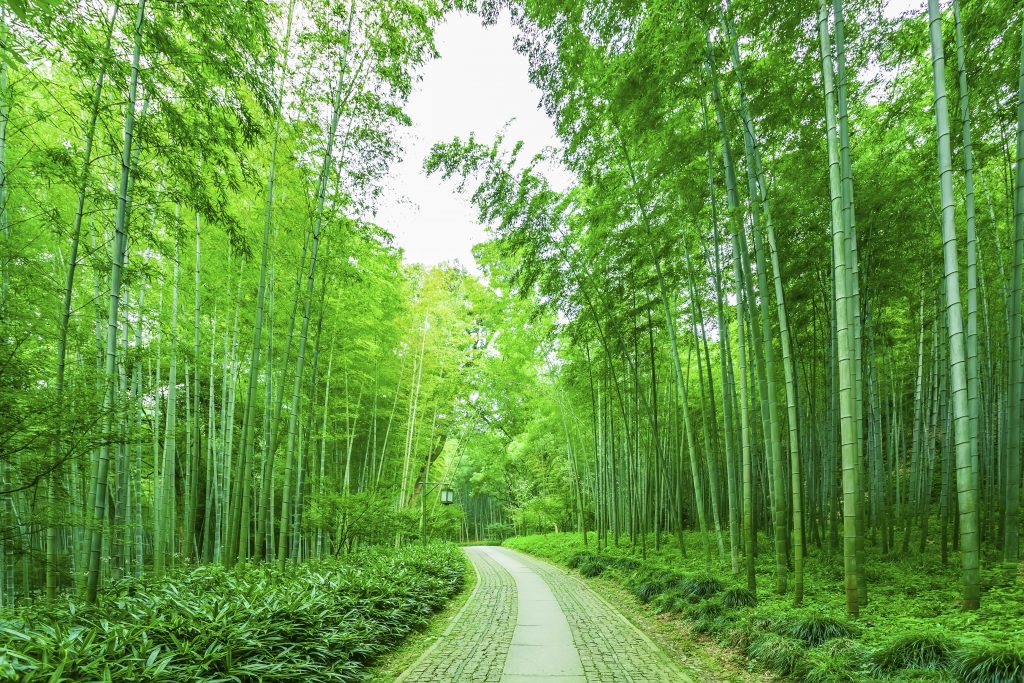
- Ecosystem Resilience:
- Knowledge of tree communication mechanisms helps us better understand how forests respond to environmental stresses, such as pests, diseases, and climate changes.
- This understanding enables the development of strategies to enhance ecosystem resilience and support forest health.
- Optimized Resource Allocation:
- Understanding how trees communicate their resource needs and allocate nutrients within a forest ecosystem allows for more efficient land management.
- This knowledge can guide decisions on planting, thinning, and forest restoration to ensure optimal resource utilization.
- Pest and Disease Management:
- Learning how trees communicate their distress signals in response to pests and diseases can lead to innovative pest management strategies.
- By recognizing these signals, early interventions can be applied to prevent the spread of diseases and reduce the impact of pests.
- Climate Change Adaptation:
- Insight into tree communication mechanisms aids in developing strategies for adapting to climate change.
- Trees’ ability to communicate shifts in temperature, moisture, and other environmental factors can guide conservation efforts and planting choices.
- Conservation and Biodiversity:
- Understanding how trees communicate allows us to appreciate the complex relationships that contribute to biodiversity.
- This knowledge can inform conservation practices that support not only individual tree species but entire ecosystems.
- Sustainable Forest Management:
- Applying scientific insights into tree communication can lead to more sustainable and ecologically sound forest management practices.
- This includes decisions on selective harvesting, reforestation, and maintaining healthy forest ecosystems.
- Urban Planning and Design:
- Incorporating knowledge of tree communication mechanisms into urban planning can result in more resilient and vibrant urban green spaces.
- Trees that can communicate their needs and respond to changing urban conditions contribute to healthier cities.
- Education and Awareness:
- Understanding how trees communicate provides educational opportunities to engage the public in environmental science.
- Increased awareness fosters a deeper connection to nature and promotes a sense of responsibility for conservation efforts.
- Innovation and Technology:
- Insights from tree communication research can inspire innovative technologies for enhancing agricultural practices, sustainable forestry, and ecological restoration.
- Preservation of Ecosystem Services:
- Ecosystem services provided by trees, such as air purification, climate regulation, and soil stabilization, are influenced by their communication.
- Understanding these mechanisms helps preserve and maximize these essential services.
- Holistic Ecosystem Understanding:
- Studying tree communication encourages a more holistic view of ecosystems, highlighting the interconnectedness of living organisms and their environments.
- Scientific Curiosity and Discovery:
- Understanding tree communication satisfies our innate curiosity about the natural world and drives scientific discovery.
- Unraveling the intricacies of tree communication can lead to new revelations and breakthroughs in ecological science.
In summary, understanding the scientific mechanisms behind tree communication is crucial for effective land management, ecosystem preservation, and the advancement of ecological knowledge. By delving into the complexities of how trees interact and communicate, we gain valuable insights that can guide us toward more sustainable and harmonious coexistence with nature.
Mycorrhizal Networks and Fungal Partnerships
Mycorrhizal networks and fungal partnerships are fascinating aspects of plant communication and symbiosis. These relationships involve the close interaction between plants and certain types of fungi, resulting in mutual benefits for both parties. Mycorrhizal networks are underground networks formed by these fungi, which facilitate nutrient and information exchange between plants.
There are two main types of mycorrhizal partnerships:
- Ectomycorrhizae: In ectomycorrhizal relationships, the fungal hyphae (thread-like structures) surround the plant roots and form a dense network called a mantle around the root tips. This association is often observed in trees like pines, oaks, and birches. The fungal hyphae don’t penetrate the root cells directly but instead form a sheath around them. Ectomycorrhizal fungi help plants access nutrients like nitrogen and phosphorus from the soil, while the plant provides the fungi with sugars produced through photosynthesis.
- Endomycorrhizae (Arbuscular Mycorrhizae): Endomycorrhizal fungi, also known as arbuscular mycorrhizal fungi (AMF), form a more intimate association with plant roots. The fungal hyphae penetrate the root cells, forming branching structures called arbuscules within the cells. This type of mycorrhiza is found in a wide range of plants, including many crops. The exchange of nutrients and compounds between the fungus and the plant is more direct in endomycorrhizal partnerships.
Mycorrhizal networks and fungal partnerships offer several key benefits:
- Nutrient Exchange: Fungi have a larger surface area for nutrient absorption compared to plant roots alone. They can extend into the soil and access nutrients like phosphorus, nitrogen, and micronutrients, which might be otherwise unavailable to the plant.
- Water Absorption: Mycorrhizal fungi can enhance a plant’s water absorption capabilities, helping plants survive drought conditions.
- Disease Resistance: Some mycorrhizal fungi can protect plants from soil-borne pathogens by acting as a barrier or producing antimicrobial compounds.
- Stress Tolerance: Mycorrhizal associations can help plants cope with various environmental stresses, such as salinity, heavy metals, and temperature extremes.
- Communication and Resource Sharing: Mycorrhizal networks connect multiple plants together, allowing them to share nutrients, water, and even information. This network enables older, established trees to support younger, shaded trees by sending resources through the fungal network.
- Soil Structure Improvement: Mycorrhizal fungi can improve soil structure by binding soil particles together with their hyphae, enhancing soil stability and water retention.
About Murray, Utah
Murray is a city situated on the Wasatch Front in the core of Salt Lake Valley in the U.S. state of Utah. Named for territorial governor Eli Murray, it is the state's fourteenth largest city. According to the 2020 census, Murray had a population of 50,637. Murray shares borders with Taylorsville, Holladay, South Salt Lake and West Jordan, Utah. Once teeming with heavy industry, Murray's industrial sector now has little trace and has been replaced by major mercantile sectors. Known for its central location in Salt Lake County, Murray has been called the Hub of Salt Lake County. Unlike most of its neighboring communities, Murray operates its own police, fire, power, water, library, and parks and recreation departments and has its own school district. While maintaining many of its own services, Murray has one of the lowest city tax rates in the state.
Neighborhoods in Murray, Utah
Murray Oakes, Grant Park, Southwood Park, Murray Park, Murray Park Restrooms, Willow Pond Park, Neighborhood Veterinary Care
Things To Do in Murray, Utah
Bus Stops in Murray, Utah to Truco Services, Inc.
Bus Stop in Murray Central Station (Bay C) Murray, Utah to Truco Services, Inc.
Bus Stop in State St @ 4801 S Murray, Utah to Truco Services, Inc.
Bus Stop in Murray North Station Murray, Utah to Truco Services, Inc.
Bus Stop in State St @ 4949 S Murray, Utah to Truco Services, Inc.
Bus Stop in Murray Central Frontrunner/Trax Station Murray, Utah to Truco Services, Inc.
Bus Stop in Murray Blvd / Vine St (SB) Murray, Utah to Truco Services, Inc.
Bus Stop in State St @ 3925 S Murray, Utah to Truco Services, Inc.
Bus Stop in State St @ 4824 S Murray, Utah to Truco Services, Inc.
Bus Stop in State St @ 5223 S Murray, Utah to Truco Services, Inc.
Bus Stop in Murray Blvd / Allendale Dr (NB) Murray, Utah to Truco Services, Inc.
Bus Stop in Murray Blvd @ 5039 S Murray, Utah to Truco Services, Inc.
Bus Stop in State St @ 4721 S Murray, Utah to Truco Services, Inc.
Driving Directions in Murray, Utah to Truco Services, Inc.
Driving Directions from Woodruff Tree Trimming and Removal to 4640 Commerce Dr, Murray, UT 84107, USA
Driving Directions from Reliable Tree Care to 4640 Commerce Dr, Murray, UT 84107, USA
Driving Directions from Tree Pro-Tech to 4640 Commerce Dr, Murray, UT 84107, USA
Driving Directions from Prestige Tree And Landscape to 4640 Commerce Dr, Murray, UT 84107, USA
Driving Directions from Excellence Tree & Landscape to 4640 Commerce Dr, Murray, UT 84107, USA
Driving Directions from Amen Trees to 4640 Commerce Dr, Murray, UT 84107, USA
Driving Directions from Tim's Tree Care to 4640 Commerce Dr, Murray, UT 84107, USA
Driving Directions from Jordan Tree Service - Murray to 4640 Commerce Dr, Murray, UT 84107, USA
Driving Directions from Arbor Works to 4640 Commerce Dr, Murray, UT 84107, USA
Driving Directions from Diamond Tree Experts to 4640 Commerce Dr, Murray, UT 84107, USA
Driving Directions from Green Tree Arborist to 4640 Commerce Dr, Murray, UT 84107, USA
Driving Directions from TruCo Services to 4640 Commerce Dr, Murray, UT 84107, USA
Reviews for Truco Services, Inc. Murray, Utah
Emily Abercrombie
We had a great experience with TruCo! They were well priced, responsive and prompt. Michael was a pleasure to work with and gave us advice on which plants to put in where we took out our ugly old shrubs. I would highly recommend this company!!!
Michelle Turpin
TruCo Services gets 5 stars from us for customer service. We experienced a few issues with their services this last year and Rob Eccles in senior management, stepped in and immediately handled our issues. He was very committed to making sure they understood our expectations and would execute to make us happy.
Siobhan Billingsley
I work for a property management company and have the pleasure of working with Rob at a community in Sandy. He has been incredible to work with and always responds in a timely manner. He knows all the homeowners by name and address and is aware of all the "problem" areas when it comes to sprinklers. I never have to worry about following up with him because he always reaches out to provide me with an update. If you're looking to work with someone who takes pride in their job, is professional, and can solve the worst landscaping problems thrown your way, Rob is your guy. Thank you, Rob for all you do!
Jaime S.
We have used Truco at 2 of the complexes we manage, they have been great to work with. Good quality service, outstanding customer service with good communication. That's hard to find these days. I highly recommend them. Travis has been awesome to work with.
Jerusha Smart
We use TruCo for a majority of our properties and our home. While other landscaping companies we use come and go for various reasons like cost, communication issues, work performance, etc., TruCo is always consistent in price and work. Also, Rob is the best.
